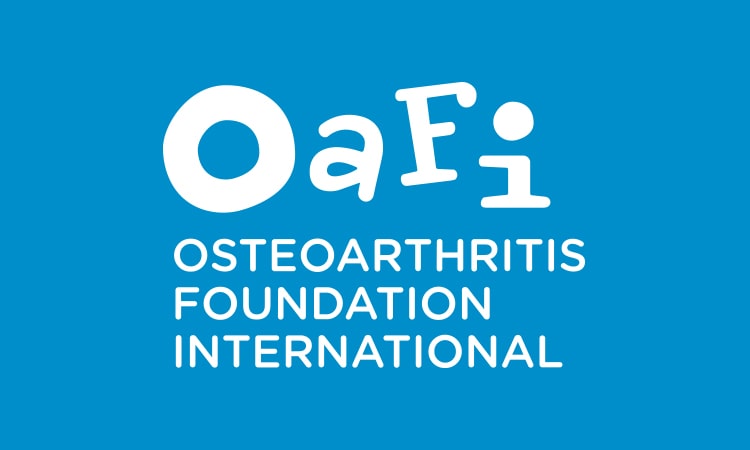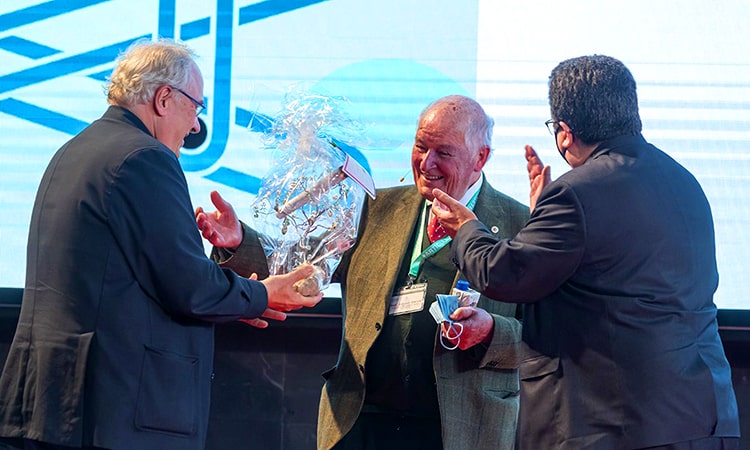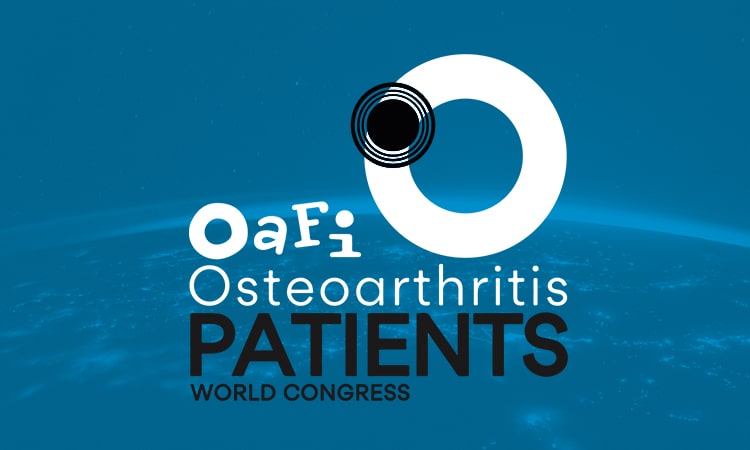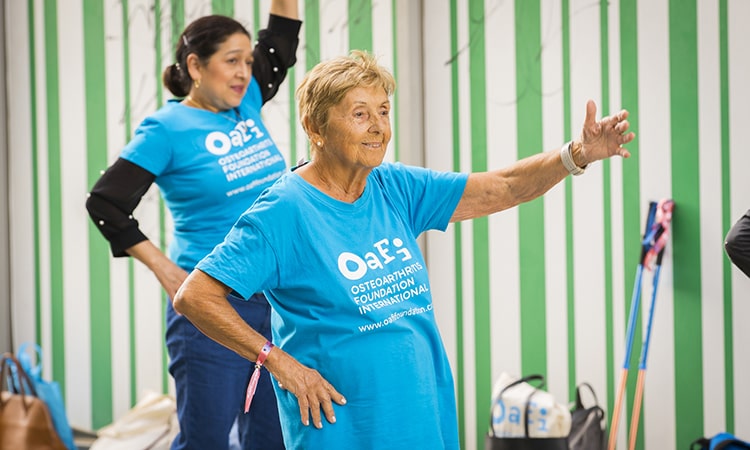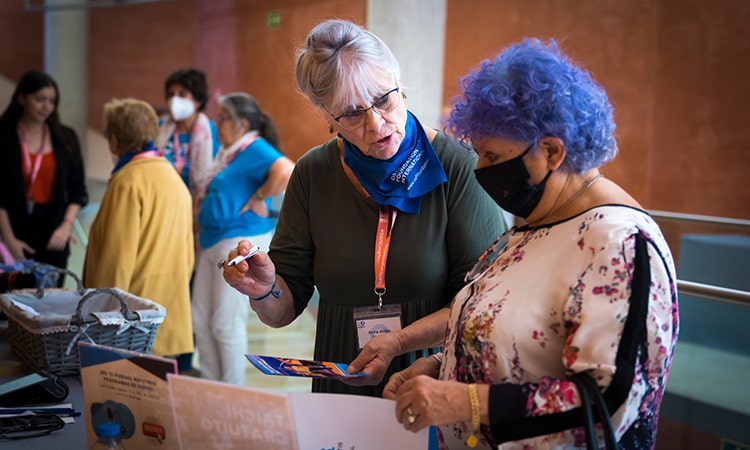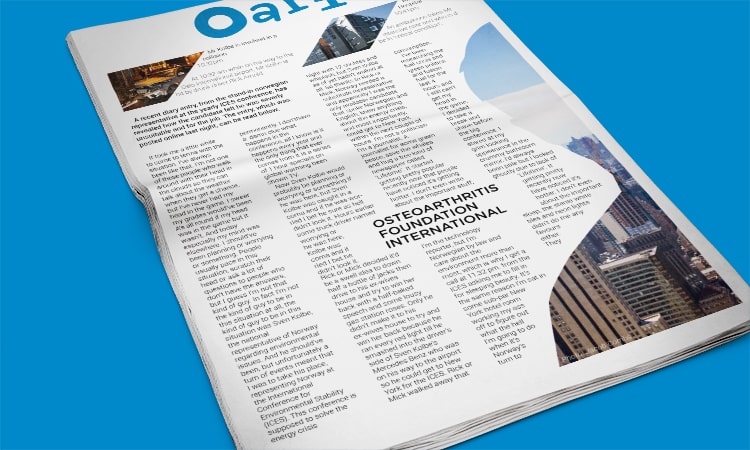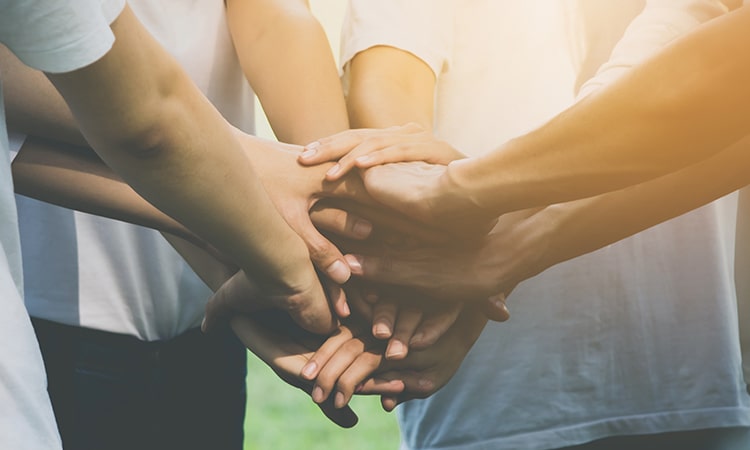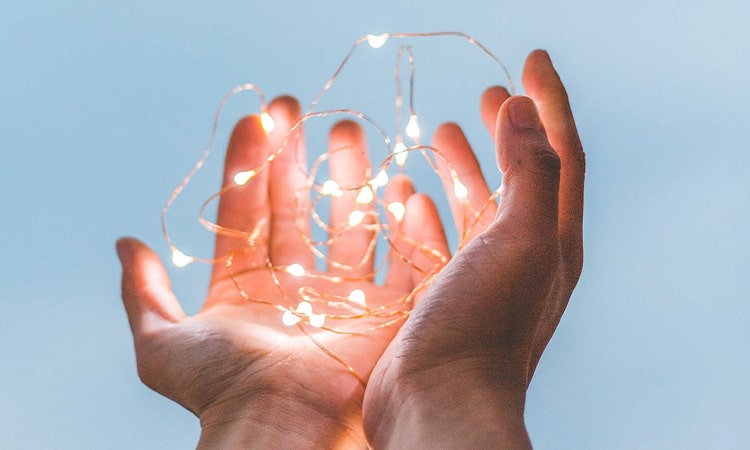- Foundation
- Actions
- Osteoarthritis
- Actuality
- OAFI Radio/TV
- Get Involved
- Contact
OAFI
Osteoarthritis International FoundationC/ Tuset, 19 · 3º 2ª
08006 Barcelona
(+34) 931 594 015
info@oafifoundation.comSchedule:
Monday-Thursday 9AM-6PM
Friday 8AM-3PM
-

-

-

Treatments
The development of osteoarthritis is linked to two types of factors: some that we cannot modify because they are genetic (age, sex, race) and others that we can act on, such as: lifestyle habits (obesity, type of work, sporting activity), alterations in joint alignment, previous joint trauma and surgeries, among others.
The main goal of osteoarthritis treatment is to reduce pain, inflammation and disability, slowing cartilage wear and disease progression. The treatment can be faced from prevention, with non-pharmacological measures, and also with pharmacological, surgical and rehabilitative measures.
It must not be forgotten that to treat osteoarthritis it is necessary to individualize treatment in relation to risk factors, taking into account the degree of pain, inflammation, disability and joint injury. Finally, it should be noted that the treatment must be multidisciplinary, involving family doctors, rheumatologists, rehabilitation specialists, pharmacists, occupational therapists, nurses and physiotherapists.
Preventive measures and non-pharmacological treatments
They are a fundamental part of the treatment of osteoarthritis and will positively influence its evolution.
Non-drug treatment includes:
- 1. Health education: Information is the key.
An informed patient is a person who feels better and is more autonomous. Knowing the disease will help you know what to do to prevent it and improve your quality of life if you live with it. As a patient, you must know and assume this chronic disease with self-responsibility: know what is the reason for your ailment, what to do to alleviate pain and mobility, etc.
- 2. Healthy and balanced diet: Watch your weight!
Obesity is one of the factors that influences the appearance of osteoarthritis. There are numerous studies that show that weight loss relieves the overload of the joints and, therefore, slows down the development of osteoarthritis. It is highly recommended to control the body mass index and eat a balanced diet that allows us to maintain good joint health. Likewise, some data suggests that the consumption of vitamins C (citrus, pepper, broccoli), D (fish, dairy, eggs) and E (nuts, oregano and basil, avocados) could be beneficial in osteoarthritis, despite the fact that It is a controversial issue because there is not enough scientific evidence to conclude it. However, it is advisable to maintain normal levels of them in our body. On the other hand, there is evidence that the Mediterranean diet, based on the use of virgin olive oil, reduces inflammation caused by knee osteoarthritis.
If you want to know more about the benefits of the Mediterranean diet, and how diet can stop the pain and inflammation of osteoarthritis, OAFI puts at your disposal a nutrition service run by Dr. Laura Arranz clicking here. - 3. Physical exercise: Practice sports, but in moderation.
Light to moderate exercise is good for your joints. It is important that you carry out training loads appropriate to your physical condition and according to the advice of a specialist. Likewise, in order to have good joint health, it is essential to respect the warm-up and cool-down exercises when practicing any physical activity. It should also be taken into account that those exercises in which the joint is not subjected to a lot of pressure, such as: walking, cycling or swimming, are more recommendable than those considered as impact sports: basketball, football and athletics, among others. others.
In general, alternating moderate exercise for at least 30 minutes, 5 days a week, or doing intense exercise for at least 20 minutes, 3 days a week with breaks, can be indicative.
- 4. Joint Relief: Rests and rests the joints.
Rest is a key factor in controlling the pain of the inflammatory outbreaks that osteoarthritis has. If you feel pain, rest your joints and you will be taking care of your joint health.
The use of walking sticks can help avoid overloading the knee and/or hip.
On the other hand, it is important to pay attention to the footwear you use. A shoe with a high heel does not properly cushion the footprint and has little impact absorption when walking. It is preferable that you use thick-soled and rather flat shoes that stabilize your steps. It is recommended that the sole be made of rubber since traumatisms or falls due to lack of grip due to slipping caused by other less adherent materials are avoided. The use of insoles can help reduce pain. - 5. Postural rules:
It is recommended to avoid heavy loads and repetitive movements of the joints. Certain professions predispose to the appearance of osteoarthritis. For example, in 1952 it was shown that the prevalence of knee osteoarthritis was almost six times higher in miners. In the same way, professionals who use their hands a lot also presented a higher frequency of the ailment in this location.
Also, standing without resting for a long period of time and walking on uneven ground is inadvisable. - 6. Other measurements:
For patients with osteoarthritis of the knee, we can recommend the application of massage with an ice pack, performing sessions of less than 20 minutes, 5 days a week, for 2 weeks, while for osteoarthritis of the hand, patients find relief with hot water or paraffin baths.
Hydrotherapy can be effective in certain cases. Staying in spas with hot springs is considered beneficial by many arthritics. Probably not only due to the therapeutic effect of the waters, but also produces a good physical and, above all, emotional response.
Pharmacological treatments
Drugs used in osteoarthritis include analgesics, minor and major opioids, non-steroidal anti-inflammatory drugs (NSAIDs), topical, intra-articular treatments, and chondroprotective drugs with SYSADOA (slow-acting symptomatic) and DMOAD (disease-modifying) effects.
The use of the different drugs will depend on the intensity and location of the osteoarthritis as well as the characteristics of the patient: age, comorbidity, possible interactions, degree of disability, and the presence or absence of synovitis.
This article is merely informative, so you should always consult your doctor.
- 1. Analgesics
For example, paracetamol, which despite not modifying the natural course of the disease, is used in the treatment of mild osteoarthritis and can be taken long-term. However, it must be said that reconsiderations have recently appeared both at the level of efficacy and safety.
They are contraindicated in chronic liver disease and alcoholism, and great caution should be exercised and limit the dose and duration of treatment in asthmatic patients, with renal disorders, alcoholism, non-chronic liver involvement and in patients with gastrointestinal and cardiovascular risk. - Opioids
Codeine, tramadol, and dextropropoxyphene are minor opioids while fentanyl, oxycodone, tapenadol, and morphine are strong opioids used when there is no response to the above drugs.
Opioids can cause addiction and also have frequent, very annoying and sometimes dangerous side effects (nausea, vomiting, constipation, drowsiness), therefore their use is considered only when there is a contraindication or ineffectiveness with the use of paracetamol or NSAIDs. - Non-steroidal anti-inflammatory drugs (NSAIDs)
The best known are ibuprofen, naproxen, diclofenac and celecoxib. They are commonly used for the treatment of osteoarthritis due to their analgesic, antipyretic and anti-inflammatory properties, although they do not modify the natural course of the disease.
They would be contraindicated in patients with: liver and kidney disorders, arterial hypertension, heart failure, coronary ischemia/myocardial infarction and stroke, due to their adverse effects. For this reason, they should be used for the shortest time possible, with the lowest effective dose and on an individual basis so as to pose the least cardiovascular and/or gastrointestinal risk to the patient. - Chondroprotective drugs with SYSADOA and DMOAD effect
It is a slow symptomatic treatment of osteoarthritis that influences the course of the disease by delaying it. It consists of: chondroitin sulfate and its combination or association with glucosamine hydrochloride. They are highly safe drugs, especially indicated in patients with comorbidities.
The efficacy and safety data are based on studies and clinical trials conducted with chondroitin sulfate and pharmaceutical grade glucosamine, which should not be confused with dietary preparations marketed in the United States or the United Kingdom (nutraceuticals), not approved by the FDA (Food and Drug Administration of the USA) and that do not comply with the quality requirements of the EMA (European Medicines Agency of the EU).
In Spain, these substances are approved as drugs by the Spanish Agency for Medicines and Health Products (AEMPS), they do not have adverse effects and are therefore considered appropriate for all types of patients as they reduce the need to use other more aggressive agents and at higher risk.
In addition, in recent studies the cardioprotective capacity of both drugs has been observed, capable of reducing the possibility of suffering an ischemic stroke and an acute myocardial infarction by around 30%.
- Intra-articular treatments
On the one hand, we have intra-articular corticosteroids, which have been used for decades. Treatment consists of a cortisone injection with an anesthetic, which reduces inflammation and provides short-term pain relief. On the other hand, there is intra-articular hyaluronic acid, which is used in clinical practice to relieve osteoarthritic pain in patients who do not respond to NSAIDs and for whom joint replacement is not a viable option. Finally, there is chitosan, which has proven to be effective in advanced knee osteoarthritis.
- Topical drugs
Topical drugs have shown their usefulness in reducing pain in the affected joint with a lower possibility of side effects, limited to mild local reactions.
Topical diclofenac and capsaicin have shown to be effective in patients with osteoarthritis, reducing pain and improving functionality.
On the other hand, he is also using CBD to treat episodes of chronic pain caused by OA, but we need more scientific evidence to recommend it as a treatment for osteoarthritis. - Regenerative medicine
Regenerative medicine continues to take giant steps towards the rescue of patients with osteoarthritis and does so hand in hand with advanced therapies, highly innovative medicines that are based on the use of genes (gene therapy), cells (cell therapy) or tissues (tissue engineering) to prevent or treat various diseases, including those related to the repair of articular cartilage.
For example, exosomes are capable of activating injured cells and their tissues; they also promote regeneration through their bioactive contents and functional molecules. On the other hand, Platelet Rich Plasma (PRP) has proven to be effective in the regeneration of damaged tissues, ensuring recovery and presenting a high degree of improvement and satisfaction among patients. Despite the good results, there is still a lot of research to be done, but we can affirm that the cell is a medicine and a key therapeutic opportunity for patients with osteoarthritis.
NATURAL treatments
Hand osteoarthritis with Quantinc Nanotech
Quantic Nanotech is a Spanish innovation company that has developed an Osteoarthritis Treatment System integrated in an Electronic Glove, which helps to improve hand pain with a combination of natural substances and vibrations.
At OAFI R&D, we work to improve the quality of life of patients suffering from this disease and one of our areas of activity is focused on the search for new treatments such as this one.
You can find out more about Quantic Nanotech’s gloves and try them out for yourself on their website. Use the code OAFI to enjoy a 5% discount.
- “The OAFI Foundation was born to give a voice to the millions of people who suffer from a disease as devastating as osteoarthritis. With an innovative, creative and action mentality, at OAFI we have pioneering projects for treatment and research. Our motto is: WE MAKE THINGS HAPPEN!”
 Dr. Josep Vergés
Dr. Josep Vergés - “The patient is the raison d'être of the International Osteoarthritis Foundation (OAFI) and is the engine that drives us to work and move forward. Being an OAFI volunteer means taking sides and helping to carry out the initiatives promoted in favor of other patients and the Society in terms of health.”
 Maria Teresa Vergés
Maria Teresa Vergés - “Communication is one of the central pillars of OAFI. As patient representatives, it is our duty to bring their voice to the public sphere and, in turn, transfer them the necessary tools to better understand their disease. Our role as disseminators and awareness of osteoarthritis is essential to help them understand and accept it. In this way, we will be able to improve their quality of life and prevent future cases of the pathology.”
 Cristina Nova
Cristina Nova - “In order to develop the social activity of the foundation, it is important to raise funds that allow us to act autonomously and independently. From the foundation we have to thank all the people and companies that, with their contributions, allow us to continue working every day to help people who suffer from osteoarthritis and other oestoarticular pathologies.”
 Marco Bibas
Marco Bibas - “The OAFI Foundation's R&D department plays a crucial role in advancing knowledge and treatment of joint health, especially osteoarthritis. We drive the generation of new scientific knowledge, we explore new therapies and treatments, and we promote the exchange of knowledge, resources and data with organizations and researchers around the world, with the aim of improving the lives of those who suffer from this disease.”
 Nina Martínez
Nina Martínez - "An informed patient is a patient who knows how to better deal with his illness." From the OAFI communication department we produce 2 weekly radio programs designed to help improve the quality of life of patients suffering from osteoarthritis with a clear focus on prevention and self-care. OAFI Radio is focused on joint health and the needs of our patients and OAFI Sport has the perspective of putting health at the center of the sports world.”
 Ariadna Sánchez
Ariadna Sánchez - "Non-Governmental Organizations (NGO) and Non-Profit Organizations (ONL), in order to undertake actions that transform and improve society, we need the Corporate Social Responsibility of companies, since financing is necessary and in application of ethics and transparency enhances donor organizations.”
 Dr. Baquero Úbeda
Dr. Baquero Úbeda
Help us improve the quality of life of Osteoarthritis patients.
BECOME A PARTNER
Help us improve the quality of life of osteoarthritis patients by becoming a partner.
BECOME A VOLUNTEER
The patient is the reason for being OAFI, become a volunteer and help us improve their quality of life.
MAKE A DONATION
Your help is very important to us, with it we can finance our founding work.
CONTACT
-
C/ Tuset, 19 · 3º 2ª
08006 Barcelona - (+34) 931 594 015
- info@oafifoundation.com
-
From Monday to Thursday
from 9AM to 6PM
Friday from 8AM to 3PM
My Account

The OAFI mascot, called OAFITO, was created exclusively and altruistically by the artist Xavier Mariscal.
